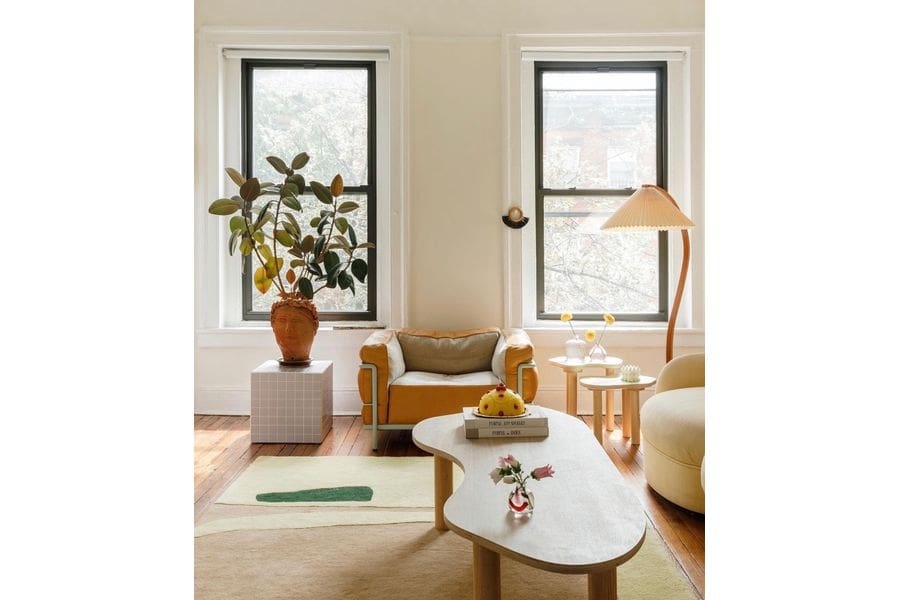Image via Wiggle Room
If you haven’t seen the curvy furniture trend yet, let me explain it to you. Its benchmarks are tabletops rendered with unconventional, rounded edges, sculptural candles that seem to swivel upward toward the ceiling, plush couches made into C-shapes, and mirrors with wavy edges on either side. This new style of homeware is the latest take on modernity within interior design at large. It ushers femininity into the spaces that we inhabit. These sumptuous designs are often made in sherpa and velvet fabrics and rendered in neutral and pastel colors. New, unconventional silhouettes meet much-loved, comfortable fabrics and colors, making this new homeware trend one we can heartily endorse. So without further delay, here are five breakout designers who are—ahem—ahead of the curve.
Gustaf Westman’s Curvy Mirror
Scandinavian designer Gustaf Westman has been dubbed “Instagram’s latest design crush” by Trendland this August. Westman’s Curvy Mirror is as playful as it is photogenic and was inspired by the Memphis Group (an Italian interior design collective from the 80s), whose founder, Ettore Sottsass, designed the Ultrafragola Mirror that was re-popularized last year. Westman’s designs are ideal for people with a penchant for pastels and come in purple, teal, white, yellow, pink, and green.
 Discover more of Gustaf Westman’s work on his Instagram (click here).
Discover more of Gustaf Westman’s work on his Instagram (click here).
Wiggle Room Tables
Wiggle Room is a New York-based furniture company founded in 2019 by Yale School of Architecture student, Levi Shaw-Faber, and Zoe Cohen, a creative brand strategist. The two have created a line of curvy-topped tables that range from a dining table to a side table and come in strawberry, mint, pistachio, lemon, and lavender.
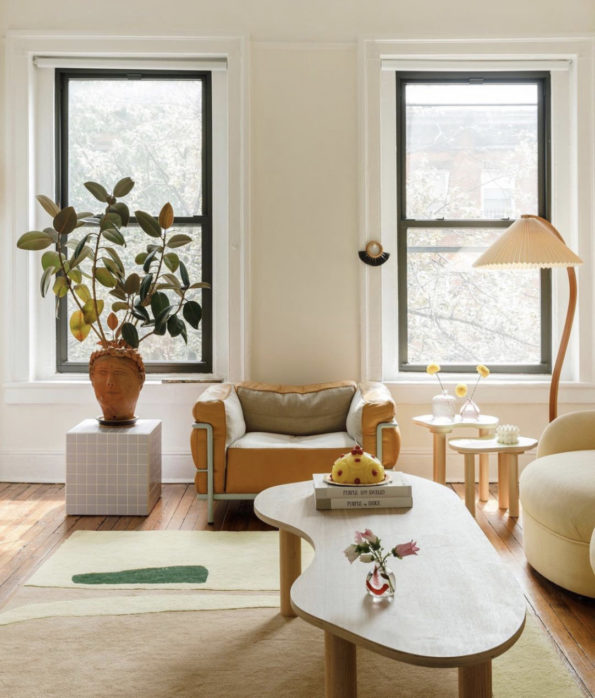
Discover the Wiggle Room’s collection on Instagram (click here).
HAY Candles
HAY is a Danish company, co-founded by Mette and Rolf Hay in 2002, whose mission is to bring excellent design to their clientele at an affordable price point. They worked with a team of designers on homeware and office-ware and developed the sculptural HAY Candle to work for both spaces. The candle is made in Italy and comes in three styles: conical, spiral, and twist. Candles come in a set of six.
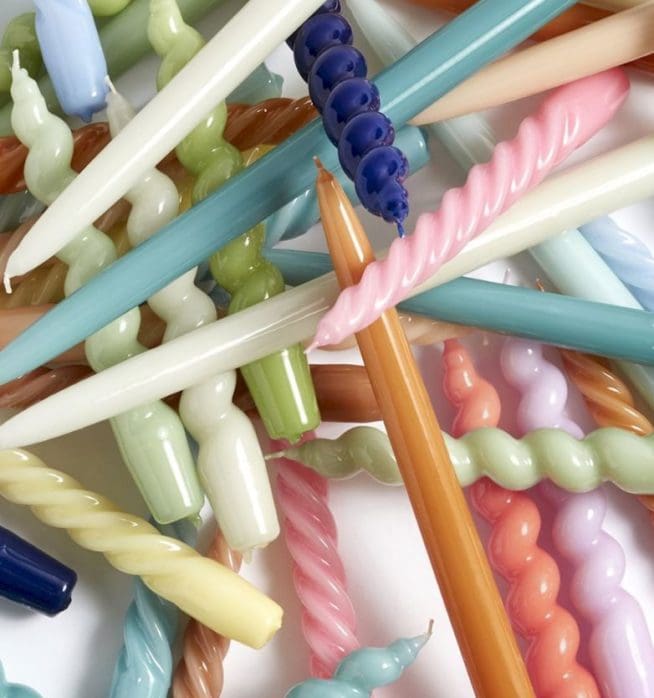 Discover the HAY designs on their Instagram (click here).
Discover the HAY designs on their Instagram (click here).
Sophie Lou Jacobsen’s Wave Pitcher
Sophie Lou Jacobsen is a New York-based designer whose Wave Pitchers were featured in ELLE Decor’s “Fluid Forces” at the Dutch Design Week festival last year. Jacobsen’s more extensive collection includes the Ripple Cup and Arch Pitcher, both of which won the Wallpaper Design Award this year. Jacobsen’s Wave Pitcher is ideal for someone invested in elevating everyday items within their home and comes in clear, amber, pink, and lilac colors.
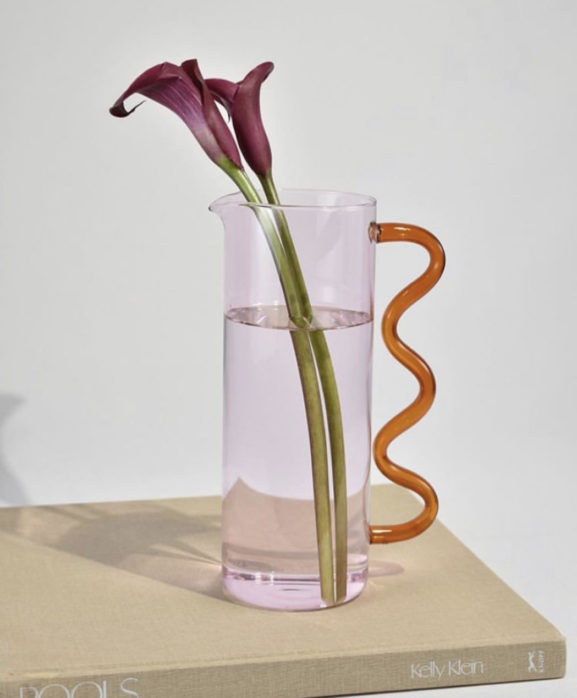 Discover Sophie Lou’s collection on Instagram (click here).
Discover Sophie Lou’s collection on Instagram (click here).
Sarah Ellison’s Huggy Chair
Created by the Australian product designer and interior stylist Sarah Ellison, the Huggy chair is cylinder-shaped and has a c-shaped backrest that curves into an armrest, kind of like it’s giving you a hug. Available in faux-sherpa and velvet, this chair is ideal for people who gravitate toward soft neutrals and is a part of Ellison’s latest collection, Sol.
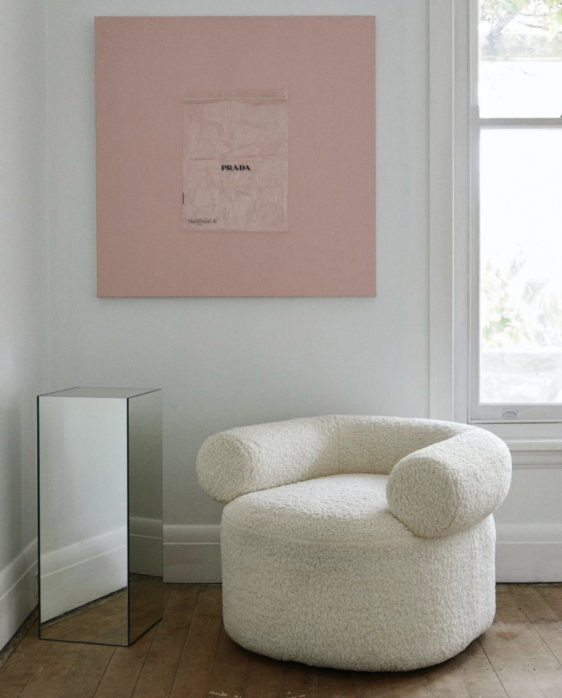 Discover more of Sarah Ellison’s work on her Instagram (click here).
Discover more of Sarah Ellison’s work on her Instagram (click here).
Why Invest In The Curvy Trend?
The lifecycle of homeware is much like any other trend—it fades in and out of style. The styles that outlive their trend status become solidified in our tastes as timeless and traditional, making the case for conservative investments in our homeware. Many opt for classic homeware to avoid splashing out on something that will look dated in a few years. That being said, aspects of the curvy trend, like minimalism and functionality, are carried over from traditional design. These pieces work just as well placed among conventional furniture as they do with other modern, curvy pieces. The versatility and organic shape of these pieces make the curvy trend likely to be a lasting element of interior design.
Ultimately, homeware is a reflection of our tastes, interests, and values. We want something that feels uniquely our own. Something different from the norm or the house that we grew up in. Unique and special pieces can help you create a habitat for yourself that feels authentic. This isn’t your parents’ homeware.

